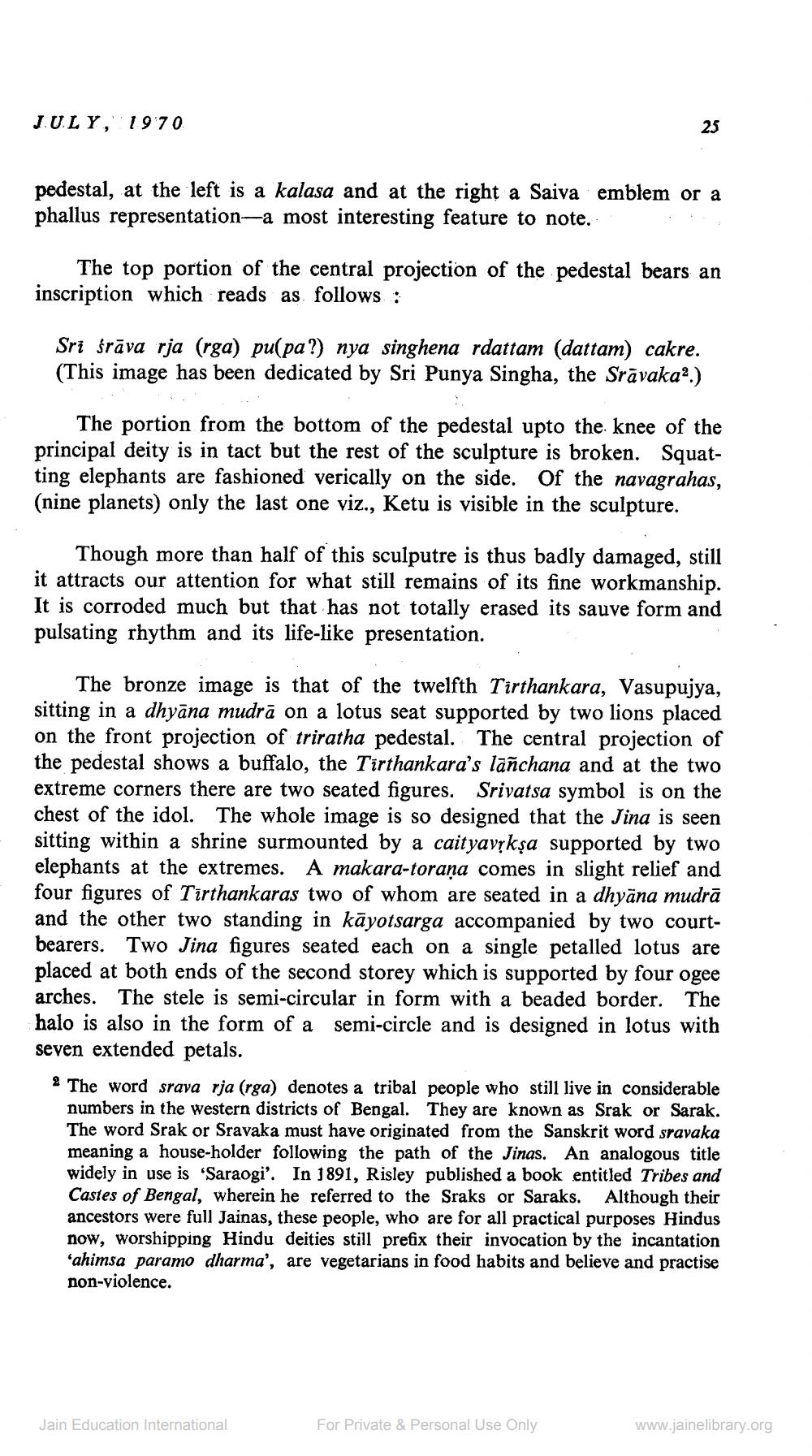________________
JULY, 1970
pedestal, at the left is a kalasa and at the right a Saiva emblem or a phallus representation-a most interesting feature to note.
25
The top portion of the central projection of the pedestal bears an inscription which reads as follows :
Sri śrāva rja (rga) pu(pa?) nya singhena rdattam (dattam) cakre. (This image has been dedicated by Sri Punya Singha, the Sravaka2.)
The portion from the bottom of the pedestal upto the knee of the principal deity is in tact but the rest of the sculpture is broken. Squatting elephants are fashioned verically on the side. Of the navagrahas, (nine planets) only the last one viz., Ketu is visible in the sculpture.
Though more than half of this sculputre is thus badly damaged, still it attracts our attention for what still remains of its fine workmanship. It is corroded much but that has not totally erased its sauve form and pulsating rhythm and its life-like presentation.
The bronze image is that of the twelfth Tirthankara, Vasupujya, sitting in a dhyāna mudrā on a lotus seat supported by two lions placed on the front projection of triratha pedestal. The central projection of the pedestal shows a buffalo, the Tirthankara's lañchana and at the two extreme corners there are two seated figures. Srivatsa symbol is on the chest of the idol. The whole image is so designed that the Jina is seen sitting within a shrine surmounted by a caityavṛkşa supported by two elephants at the extremes. A makara-torana comes in slight relief and four figures of Tirthankaras two of whom are seated in a dhyāna mudrā and the other two standing in kayotsarga accompanied by two courtbearers. Two Jina figures seated each on a single petalled lotus are placed at both ends of the second storey which is supported by four ogee arches. The stele is semi-circular in form with a beaded border. The halo is also in the form of a semi-circle and is designed in lotus with seven extended petals.
2 The word srava rja (rga) denotes a tribal people who still live in considerable numbers in the western districts of Bengal. They are known as Srak or Sarak. The word Srak or Sravaka must have originated from the Sanskrit word sravaka meaning a house-holder following the path of the Jinas. An analogous title widely in use is 'Saraogi'. In 1891, Risley published a book entitled Tribes and Castes of Bengal, wherein he referred to the Sraks or Saraks. Although their ancestors were full Jainas, these people, who are for all practical purposes Hindus now, worshipping Hindu deities still prefix their invocation by the incantation 'ahimsa paramo dharma', are vegetarians in food habits and believe and practise non-violence.
Jain Education International
For Private & Personal Use Only
www.jainelibrary.org




